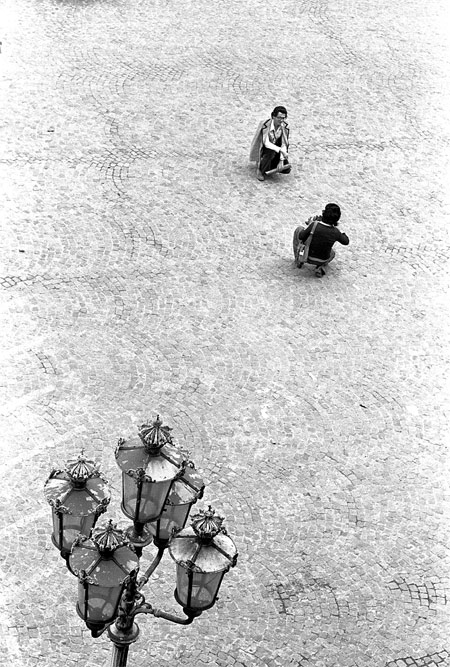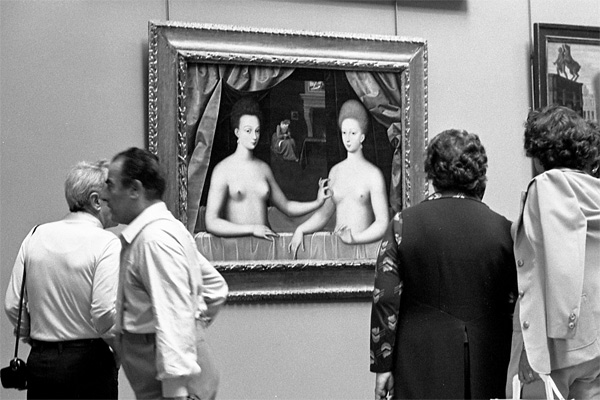Before digital came along, that is!
The seventies were a truly miserable time to be in England. Administrations alternated between the senile Conservatives, devoid of ideas and wedded to the status quo, and the Labor party, its members fuelled by the politics of envy. A weak Conservative Prime Minister, Ted Heath, caved to the blackmailing strikes of the miners. He alternated power with the socialist Harold Wilson who went along merrily with the trades unions funding his party, doing whatever it took to stay in office. Neither ‘leader’ had personal convictions worth a damn.
I had graduated a mechanical engineer from University College, London in 1973 intent on working for Rolls Royce Aircraft. There was only one small snag. The year I graduated Rolls went bankrupt, as ingested birds shattered the innovative carbon fiber turbine blades in its RB211 engine, rendering it useless. The engine was intended for Lockheed’s superb Tristar passenger jet and Rolls almost took Lockheed down with it. Well, the alternative for an engineering graduate who actually wanted to be an engineer was to work for some big government institution or become an academic. Hardly palatable alternatives for one dirt poor, ambitious young man. Realize that this was a country that accorded the sobriquet ‘engineer’ equally to the fellow installing railroad ties and to the chap at Rolls Royce. Still, I suppose the railroad ties did not snap like so much brittle chocolate.
So I decided to emigrate to the greatest country on earth, but there was a small matter of qualifications. The business of America is Business, and I didn’t know a balance sheet from an income statement. Taking advice from a smart merchant banker my mother somehow steered me to, I decided to get the UK equivalent of a CPA so that all those annual reports might make sense. It’s a damnable comment on the English educational system of those times that the very concept of an MBA did not exist, whereas in America it had been around for the best part of a century. It wouldn’t do now, would it, to teach business? Muddling through was the preferred method, preferably aided by good choice of parents.
So I joined one of those big accounting firms, got my CPA, which required grade school math skills, and four years later walked into the managing partner’s office and said I would like to emigrate. Sort of like Oliver asking for more, judging from this pompous twit’s response. “But Thomas”, he gravely intoned, “why would you want to go there? It’s full of Americans, for heaven’s sake”. I kid you not.
Well, I had had the privilege of working with those Americans as they visited Britain, over on tours from New York or Boston or Chicago, and I learned more from them about business in the four years with the accounting firm than in my whole life until then.
The last thing I did before taking that one way flight was to visit Paris. This was in 1977. I had no savings. My most precious asset was my Leica M3 and its 35mm Summaron lens with that clunky viewfinder appendage. So I borrowed fifty pounds from a sister, got on the ferry and next thing I was at Gare du Nord looking for my seedy garret. My first goal was to visit the Louvre, the Jeu de Paume and the Orangerie to feast on three of the world’s greatest art collections. A related interest, of course, was to take pictures, so the M3 and a few rolls of film came along.
There was no draconian security in those days, of course. Photography was permitted everywhere and no one really minded very much. Especially if you were reasonably discreet. The Leica and I were a seasoned pair by now. We had been recognized time and again in the photographic press, culminating with the award of the Photographer of the Year prize by Photography magazine, the leading UK monthly, and, better yet, had been published in Leica Fotografie, the house organ where all things Leitz were good.
To whom did I look for inspiration in those days, photographically? Well, that’s easy. Cartier-Bresson, Doisneau, Kertesz, Brassai. In other words, I was a street photography junkie, though I didn’t know that word at the time …. Make it fleeting, let serendipity arrange the forms just so and click. Leica. 35mm lens. TriX. D76. A combination that had seen thousands of photographers through for years on end.
The Louvre was a magical place back then. I. M. Pei, great architect that he is, had yet to con gullible Parisians with the ugly pyramid that defaced one of the world’s great spaces, much as the Pompidou museum had already done a few blocks away. Care to revisit the latter and see how well it has aged? I don’t think so.

The forecourt of the Louvre before I. M. Pei. Leica M3, 35mm Summaron. TriX/D76.
The first and prevailing sense one had on entering the museum through its vast facade was the smell of oil paint. Artists were permitted, encouraged even, to bring their oils and easels and practice by copying the works of the masters. The lighting was, of course, magic, like only Parisian lighting in the spring can be. And as this was before everyone had money, before equality had raised its ugly head, the museum was far from the zooed place that modern art collections have become. In the words of the philistine American to his wife, with but one hour to catch a flight, confronted with a priceless Italian church to view: “OK, honey, you do the inside and I’ll take the outside”. Drive-by tourism. No, people had more time to savor art back then.

What passed for fashion in the seventies. Mona at the Louvre. Leica M3, 35mm Summaron. TriX/D76.
I forget the details, but suspect that I visited the Louvre on all but one day of the week I spent in Paris. And I also took pictures, the Leica by now a part of me. Second nature.
And until good, responsive digital cameras came to market, that’s the most fun I ever had making pictures.

Early porn. Louvre. Leica M3, 35mm Summaron. TriX/D76.
In case you wonder, this painting is of Gabrielle d’Estrees and one of her sisters in the bath, c. 1595, painter (mercifully) unknown. Gabrielle d’Estrees was the mistress of that old frog, Henry IV. In her hand she holds a ring given to her by the king as a sign of their bond, and her sister is pinching her nipple indicating she is pregnant with the king’s child. Yeah, right. The surrealistic background image is of a servant sewing baby clothes.
Click on the link in the left hand column for details of the book that resulted. That will take you to a written presentation along with my commentary, so you can hear what I really sound like!